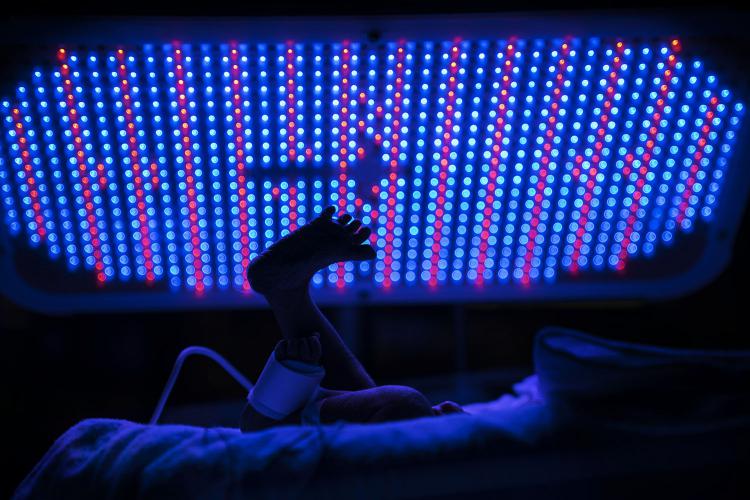
Light mesmerizes me.
While photographing an assignment in our Level III Neonatal Intensive Care Unit (NICU), the phototherapy lights over a newborn diverted my attention. The brand-new baby must have had the same attraction.
Every so often, a silhouette of the newborn’s foot or hand would rise toward the bluish lights. After finishing my original assignment, I turned my focus on this little guy. Because there are so many bright LED lights, it appears to be one light to the naked eye. But with a slow ISO, 50 and fast shutter speed 1/640th of a second, I was able to capture individual LEDs. I focused on the foot and opened my aperture to f2.8 for a shallow depth of field. My white balance was set to daylight to capture the individual LEDs true colors.
To me, it was something cool to photograph. Later, I learned of its benefit for our small patients from NICU Clinical Manager Raquel Armstrong.
Newborn babies commonly develop a yellow skin tone called jaundice, according to Armstrong. Because their livers aren’t yet working at full capacity, bilirubin – a yellow or orange substance found in bile -- builds up. Phototherapy helps convert bilirubin into products that can be passed out of the baby’s body as waste.
“Extremely high levels of bilirubin that go untreated can cause brain damage,” Armstrong said. “However, with the use of phototherapy, this has rarely occurred.”
-- by Kevin Fujii, JPS Health Network Photographer
